hy do learning providers often seek out easy-to-use and at the same time scalable LMS? Besides aiming to streamline their operations and enhance efficiency, they prioritize crafting optimal learning experiences for both learners and instructors.
And, Moodle stands out as a stalwart in this regard, renowned for its versatility, robust features, and extensive content management capabilities. However, with the ever-evolving educational landscape, there's a growing need for a Moodle alternative that offers even greater simplicity, intuitiveness, and adaptability.
If you're seeking alternatives to Moodle, you're in luck. There's a range of platforms akin to Moodle that provide comparable, if not superior, features. Each of these options boasts its distinct advantages and strengths. Here are some of the leading Moodle alternatives worth exploring:
- EducateMe: Best collaborative learning Moodle alternative;
- TalentLMS: Best gamified alternative;
- Docebo: Best AI-powered alternative to Moodle.
- Canvas LMS: Best interactive learning alternative;
- Google Classroom: Best Moodle alternatives for K-12;
- 360 Learning: Best corporate learning alternative;
- Chanilio LMS: Best free Moodle alternative;
- Forma LMS: Best for multiple learning environments;
- D2L Brightspace: Moodle alternative with powerful analytics;
- Blackboard Learn: Best blended learning alternative;
- Tovuti LMS: Best engaging learning solution.
We've explored these platforms in all the details, but first, let's quickly discuss Moodle and its capabilities.
What is Moodle?
Moodle is an open-source learning management system designed for online education and training. With a user-friendly interface and customization options, Moodle supports various learning environments, from schools to corporate training programs.
Educators can create dynamic course content, manage assessments, and facilitate interactive discussions. Learners access course materials, engage with multimedia content, and track their progress through a centralized hub.
Overall, Moodle provides a versatile and reliable solution for collaborative learning and educational success.
💡Interesting Fact: Moodle boasts a staggering 405 million users, solidifying its position as one of the most widely used LMS systems globally.
Moodle Pros
- Customization Options. Moodle offers extensive customization capabilities, allowing educators to tailor the platform to meet their specific needs and preferences.
- Cost-Effective. Moodle is available as a free, open-source solution, making it a cost-effective option for institutions and organizations of all sizes.
- Integration Capabilities. Moodle integrates seamlessly with a wide range of third-party tools and services. Users can easily integrate external resources, such as content repositories, communication tools, and assessment platforms, to enrich their learning environment.
- Regular Updates. Moodle receives frequent updates and new features to enhance its functionality and user experience. These updates ensure that the platform stays current and relevant for users.
- Open-Source Community. As an open-source platform, Moodle benefits from a vibrant community of developers, educators, and enthusiasts who contribute to its ongoing development and improvement.
Moodle Cons
- Complexity for Beginners. While Moodle offers extensive customization options, the abundance of features and settings can be overwhelming for new users. The learning curve may be steep for educators who are not familiar with the platform or LMS systems in general.
- Technical Support Challenges. Obtaining direct technical support for Moodle can be challenging, as users often rely on community forums, documentation, and self-help resources for troubleshooting issues. This lack of dedicated support may pose difficulties for users encountering complex or urgent problems.
- Mobile Optimization. While Moodle offers mobile compatibility, the user experience on mobile devices may not be as seamless or optimized compared to desktop usage. Users may encounter limitations or inconsistencies when accessing Moodle via mobile browsers or the official mobile app.
- Limited Built-in Features. Despite its extensive customization options, Moodle may lack certain built-in features and functionalities found in other LMS platforms. Users may need to rely on third-party plugins or integrations to access advanced features such as automated quizzes, real-time discussions, or advanced analytics.
- Resource Intensive. Running and managing a Moodle solution can be resource-intensive, particularly for organizations with large user bases or complex learning environments. Adequate server infrastructure and technical expertise are necessary to ensure optimal performance and reliability.
As responsible for selecting the right LMS, you have many options available to facilitate learning and automate the educational process.
While Moodle is a prevalent choice, there are numerous alternatives worth considering that may better align with your specific needs and preferences. Here are some of the most notable alternatives to Moodle.
#1. EducateMe: Best Moodle alternative for collaborative learning
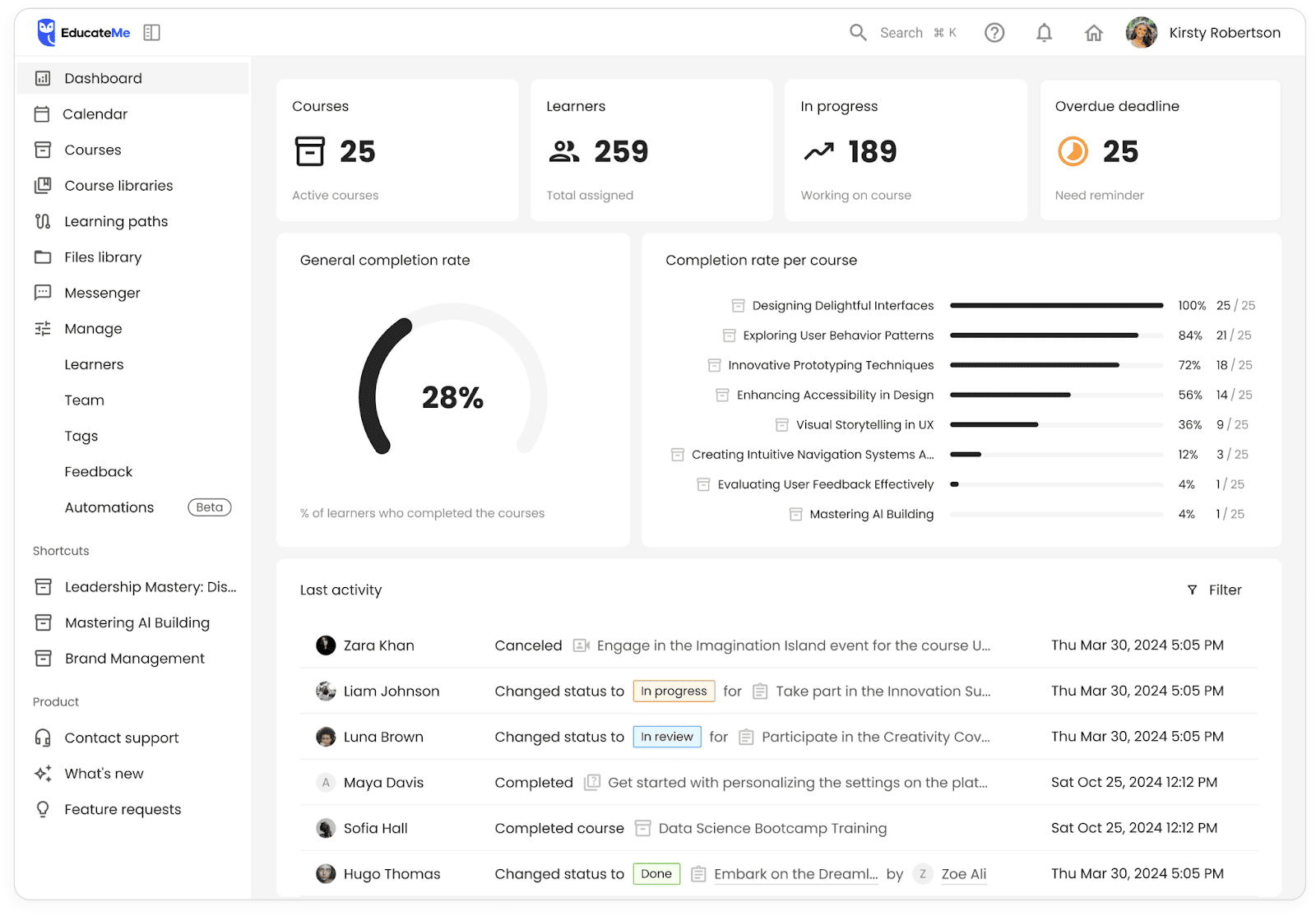
EducateMe stands out as one of the best Moodle alternatives for collaborative learning. This flexible and collaborative LMS platform offers a comprehensive set of tools to streamline assignments, foster collaboration, and manage the learning process effectively. Similar to Moodle, EducateMe provides live session hosting, intuitive course management, and robust engagement tools.
One of EducateMe's key strengths lies in its progressive cohort management and reporting capabilities. Instructors can easily track student assignments, deadlines, and progress from a unified dashboard, facilitating a seamless learning experience for both educators and learners.
Moreover, they have presented peer-to-peer learning features that make this solution one step ahead of Moodle in collaboration concerns.
With a free trial, you can explore all of EducateMe’s features, AI, and more before making a decision.
Pros of EducateMe
- Cohort-based learning experience with analytics-powered insights;
- Flexible content and assignment management, supporting various formats and integrations;
- Powerful customization and branding capabilities;
- Zoom integration for event and live sessions with auto-recorded feature;
- Seamless integration of collaborative tools for enhanced student engagement;
- Peer to peer learning capabilities.
Cons of EducateMe
- Lack of a dedicated mobile app (yet, it is pretty mobile-friendly).
Best for: Online academies and training providers seeking comprehensive collaboration and management features.
#2. TalentLMS: Best gamified Moodle alternative

TalentLMS is a cloud-based LMS platform designed for corporate training and e-learning with powerful gamified features. Offering easy deployment and intuitive administration, TalentLMS enables organizations to create and deliver online courses efficiently.
With features tailored to meet the needs of businesses, TalentLMS provides customizable course creation, robust support, and secure data management. While primarily focused on corporate training, TalentLMS can also be adapted for educational institutions looking for a user-friendly LMS solution.
Compared with Moodle, TalentLMS further enhances engagement with its gamification features, allowing organizations to incentivize learning and drive participation through rewards, badges, and leaderboards.
Pricing: TalentLMS offers a free trial for up to 5 users, with pricing ranging from $89 per month for the Start Plan to $569 per month for the Premium Plan (up to 1,000 users). Enterprise plans are available upon request.
Pros of TalentLMS
- Easy administration and deployment, suitable for businesses of all sizes;
- Flexible course creation with support for various departments and learners;
- Responsive customer support and robust security features;
- Scalable training solutions to meet changing organizational needs.
Cons of TalentLMS
- Limited educational features compared to specialized LMS platforms;
- Pricing may be prohibitive for some organizations.
Best for: Training organizations, businesses, and corporate entities seeking scalable and engaging training solutions with gamification.
#3. Docebo: Best AI-powered alternative to Moodle

Docebo is a leading cloud-based LMS platform known for its advanced features and user-friendly interface. With a focus on artificial intelligence (AI) and machine learning, Docebo offers personalized learning experiences and predictive analytics to optimize training outcomes.
Aside from its AI focus, Docebo excels as a Moodle alternative through its extensive integrations and scalability. It seamlessly integrates with various third-party tools and applications, facilitating streamlined user management and access to diverse learning resources.
Moreover, its cloud-based architecture ensures easy deployment and management, making it suitable for organizations of all sizes, from small businesses to large enterprises. This scalability allows organizations to efficiently scale their training programs while maintaining cost-effectiveness and flexibility.
Pricing: Docebo offers custom pricing based on the number of users and features required. Contact sales for a quote.
Pros of Docebo
- AI-driven personalized learning paths and recommendations;
- Advanced reporting and analytics for tracking learner progress and performance;
- Seamless integration with third-party tools and content libraries;
- User-friendly interface with customizable branding and themes.
Cons of Docebo
- Higher pricing compared to some other LMS platforms;
- Complexity may require additional training for administrators and instructors.
Best for: Enterprises and large organizations seeking advanced features and predictive analytics for employee training and development.
#4. Canvas LMS: Best interactive learning alternative
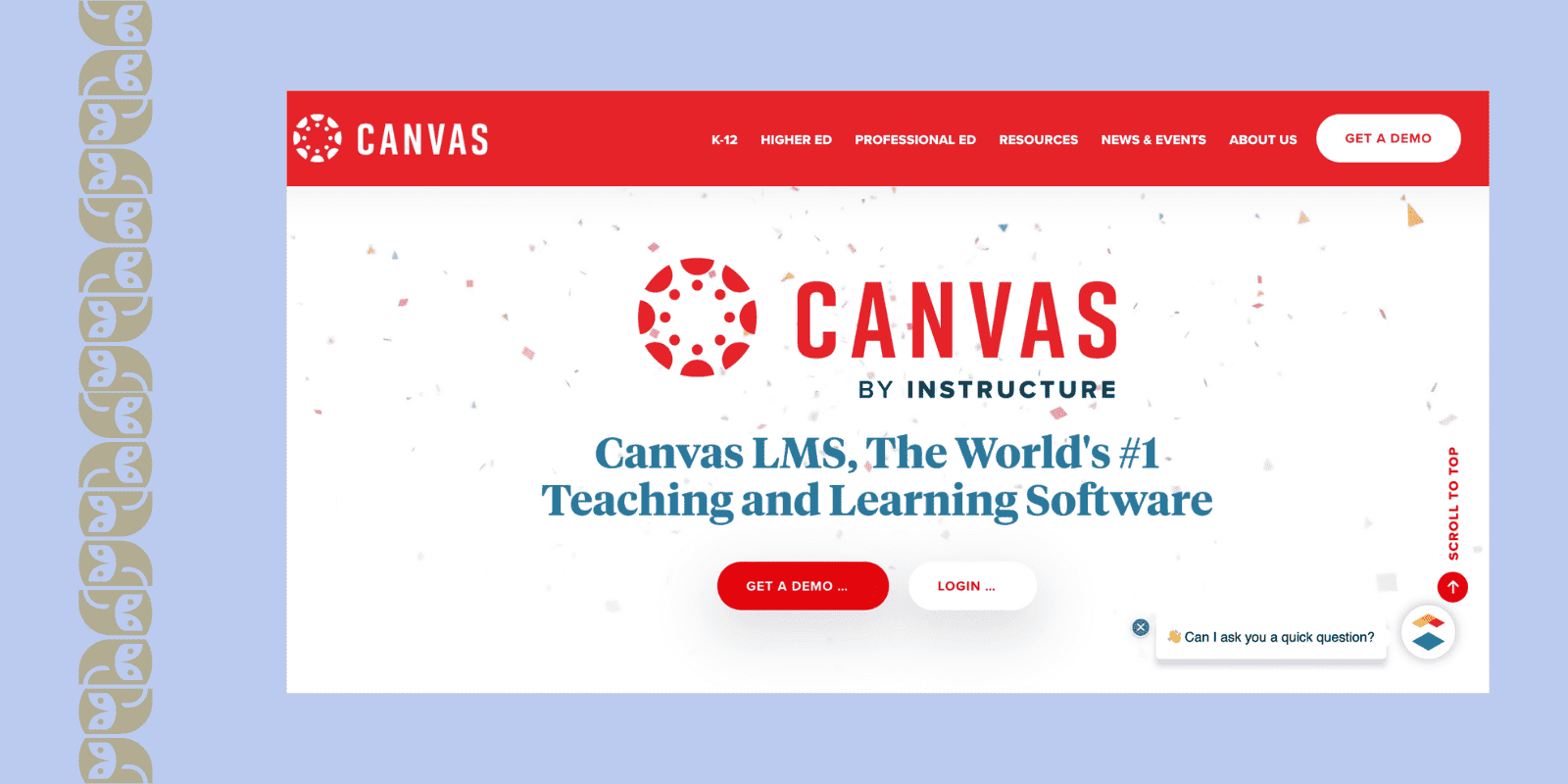
Canvas LMS, owned by Instructure Inc., emerges as one of the strong Moodle alternatives, boasting advanced features tailored for efficient course creation and delivery. Its open-source nature enables customization, empowering educators and institutions to tailor the platform to their specific needs.
One of the key strengths of Canvas LMS lies in its support for diverse content formats, facilitating a dynamic and engaging learning environment. Whether it's multimedia content, interactive quizzes, or collaborative assignments, Canvas LMS provides the tools necessary to deliver rich and interactive learning experiences.
Other than that, its robust communication and collaboration features enable seamless interaction between students and instructors, fostering a supportive online learning community.
Pricing: Canvas LMS offers a free plan, with quote-based pricing for advanced features and enterprise solutions.
Pros of Canvas LMS
- Highly customizable platform with a wide range of features;
- Support for various course formats and content types;
- Collaborative options for instructors and students, including online whiteboard and grading tools;
- Decent interface design with user-friendly navigation.
Cons of Canvas LMS
- Learning curve for new users, requiring time to master advanced features;
- Some issues with automatic assignment deletion and message recording.
Best for: Schools, universities, and learning providers with specific needs requiring customization and flexibility.
💡 Further Reading: Top Canvas LMS Alternatives and Competitors 2026
#5. Google Classroom: Best Moodle alternatives for K-12

Google Classroom is a widely used LMS platform that integrates seamlessly with other Google Apps under Google Workspace for Education. With features for assignment creation, grading, and communication, Google Classroom simplifies the process of managing courses and collaborating with students.laborating with students.
Pricing: Free Trial; 4 pricing plans, from $0 to $5.
Pros of Google Classroom
- Seamless integration with Google Workspace tools, such as Google Docs and Google Drive;
- Easy assignment creation and distribution with real-time feedback and grading;
- Streamlined communication with students through announcements and comments;
- Free to use for educational institutions and individual educators.
Cons of Google Classroom
- Limited customization options compared to some other LMS platforms;
- Basic features may not meet the needs of advanced educational settings;
- Limited support options directly from Google.
Best for: Schools, educators, and institutions already using Google Workspace or seeking a user-friendly LMS platform with seamless integration.
💡 Further Reading: Moodle vs Google Classroom: Comparison For Those Who Have Doubts
#6. 360Learning: Best corporate learning alternative
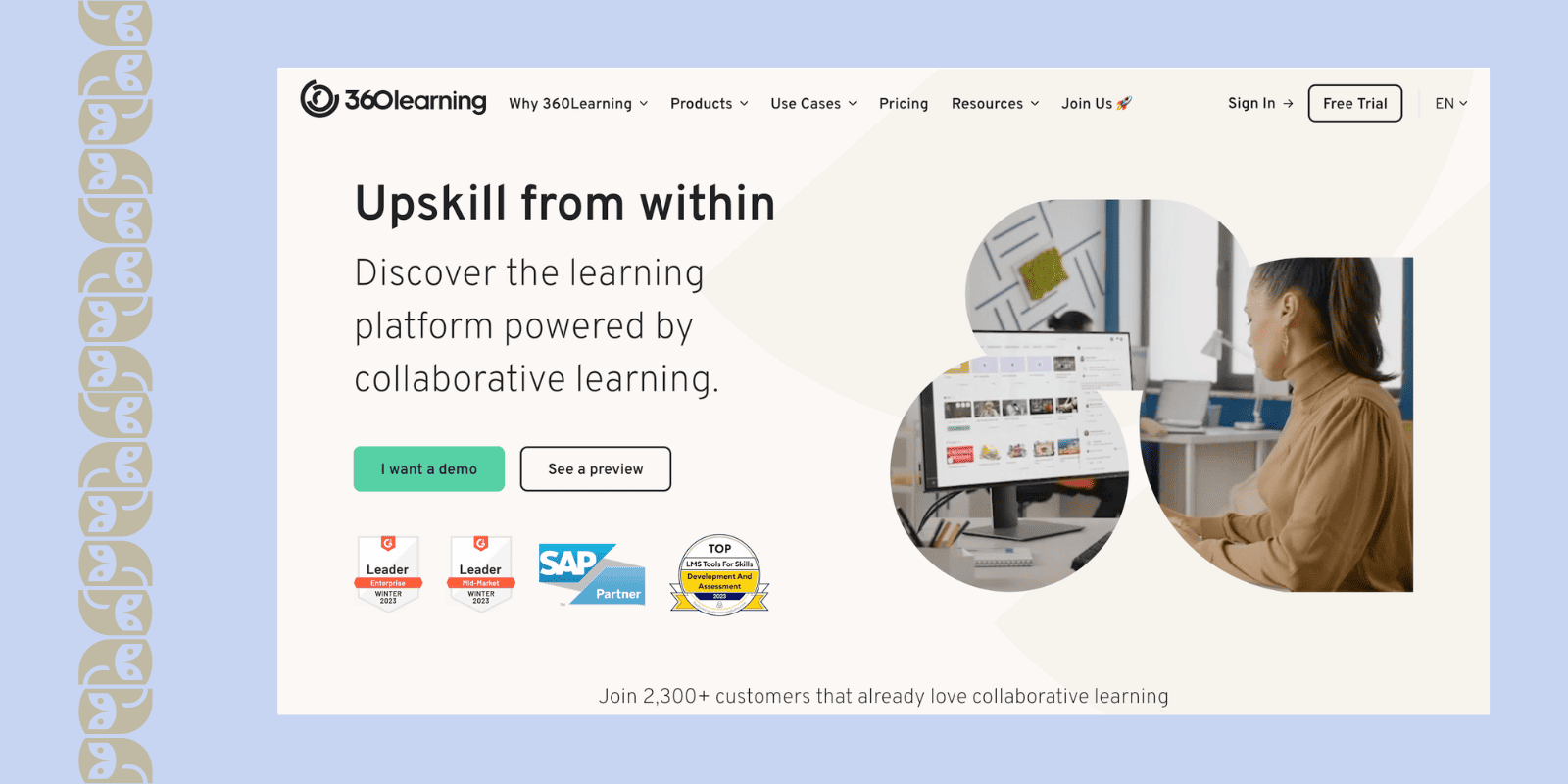
360Learning is a Moodle Alternative for blended learning that combines robust mobile support with a range of integration options and customizable content creation tools. In contrast to Moodle, 360Learning focuses on collaboration, engagement features, and customizable user experiences, providing a modern alternative for businesses.
Pricing: 30-day free trial; Team Plan — $8/registered user per month (up to 100 users/month); Business Plan — custom price.
Pros of 360Learning
- The responsive mobile app enhances learning flexibility and engagement.
- Supports seamless integration with popular tools such as Zoom, Google Drive, and Salesforce, streamlining workflows.
- Strong emphasis on collaboration and engagement through virtual classrooms, forums, badges, and leaderboards.
Cons of 360Learning
- Many advanced features are only available with the Enterprise plan, potentially increasing costs.
- Reporting functionalities are less extensive compared to Moodle.
- The lack of detailed pricing can make cost planning challenging.
Best For: Learning organizations aiming to enhance blended employee training and development programs with a mobile-first learning approach.
💡Further Reading: 10 Best 360Learning Alternatives For 2026
#7. Chamilo LMS: Best free Moodle alternative

Chamilo is an open-source learning management system that offers an easier setup and a more user-friendly experience compared to Moodle, making it a good choice for organizations with basic learning needs. However, it provides fewer customization options and advanced features than Moodle, particularly in areas like compliance management. While Chamilo is free to use with optional paid plugins, Moodle offers a more robust feature set but may require more effort to configure and customize.
Pricing: Free with optional paid plugins from third parties
Pros of Chamilo LMS
- Chamilo is straightforward to install and configure, making it accessible for users with varying technical expertise.
- The platform is free to use, with no licensing fees, though donations are appreciated.
- Provides robust tools for creating and managing courses with a decent level of customization.
Cons of Chamilo LMS
- The user interface may appear dated compared to Moodle.
- Lacks some of the advanced functionalities needed for more regulated or complex training environments.
- Customizing templates and advanced features can be more difficult compared to Moodle.
Best for: Organizations or institutions seeking a straightforward, cost-effective LMS with basic course authoring and learner management capabilities
#8. Forma LMS: Best for multiple learning environments

Forma LMS is one of the Moodle free alternatives known for its high flexibility and multi-client capabilities, making it suitable for organizations with multiple environments. While it provides extensive customization options and is easy to set up, it lacks built-in compliance management and native mobile app support. Unlike Moodle, Forma LMS charges for add-ons and requires a bit more effort for advanced training setups.
Pricing: Forma LMS is free. There are some paid integrations and add-ons
Pros of Forma LMS
- Extensive customization and configuration, that allows organizations to tailor the system to their specific needs and manage multiple environments.
- Management of various clients and brands with distinct layouts and training modules.
- Being open-source, it offers significant flexibility and integration options without ongoing hosting fees, fostering innovation and adaptability.
Cons of Forma LMS
- Lack of integrated compliance management features, which may require additional tools or plugins for regulatory adherence.
- The absence of a native mobile application can limit accessibility and user engagement.
- The exam and assessment module can be challenging to use and may require additional configuration.
Best For: S&M organizations seeking a highly customizable and flexible LMS that can manage multiple clients and training environments.
#9. D2L Brightspace: Moodle alternative with powerful analytics

D2L Brightspace offers a highly flexible and customizable learning environment, which can be tailored to a wide range of needs, from simple to complex configurations. Its user interface is designed to be intuitive for students, requiring minimal training to get started. However, instructors may find the grade book challenging to set up, and the current method for implementing learning outcomes can be tedious, though improvements are underway.
Pricing: Contact the sales department for a custom quote
Pros of D2L Brightspace
- AI Integrations that support personalized learning pathways.
- Access and engage with content effectively on any device.
- Performance+ and predictive analytics tools provide educators with deep insights into student performance.
Cons of D2L Brightspace
- Some users find the Brightspace interface confusing and unintuitive.
- Despite some flexibility, users have reported limitations in customizing page layouts and graphics.
- The calendar tool in Brightspace has been noted for its difficulty in navigation and management.
Best For: K-12 and higher education organizations seeking a flexible, intuitive learning platform with advanced AI tools.
#10. Blackboard Learn: Best blended learning alternative
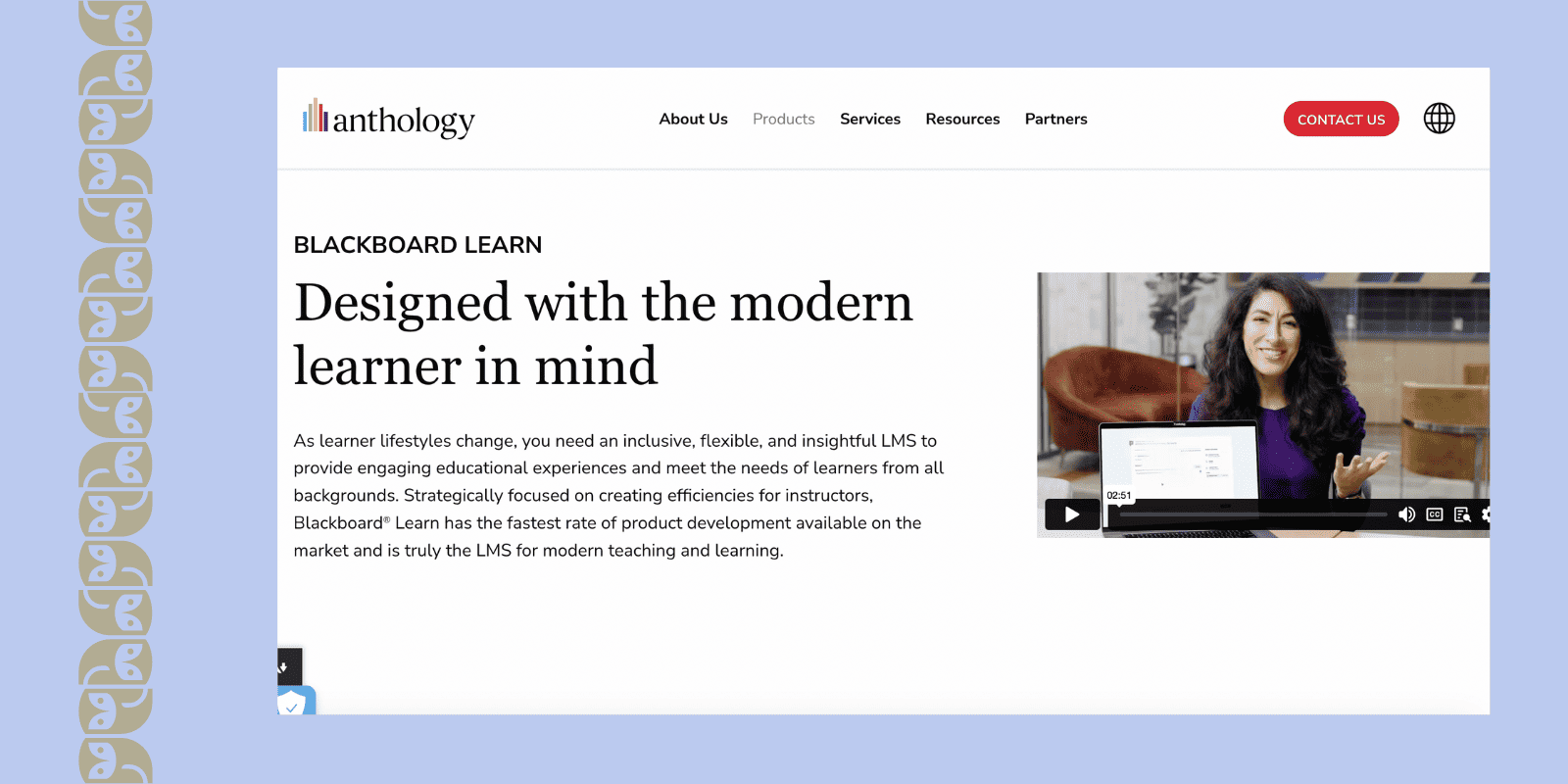
Blackboard Learn, part of Anthology, is a learning management system that excels in blending synchronous and asynchronous learning with robust features such as live video conferencing, collaborative whiteboards, and on-demand video lessons. Unlike Moodle, Blackboard Learn offers more advanced generative AI tools for course design, integrated multimedia content creation, and enhanced accessibility features. Its strong emphasis on personalized learning paths and actionable insights provides a more streamlined and modern learning experience.
Pricing: 30-day free trial; Starts at $9500.00 per year
Pros of Blackboard Learn
- Advanced AI capabilities for course structuring and assessment creation.
- Provides tools for engaging multimedia content creation.
- Features robust accessibility options and personalized learning paths.
Cons of Blackboard Learn
- Blackboard Learn is more expensive than Moodle.
- The advanced features and comprehensive tools may require a steeper learning curve and more extensive training for users.
Best For: Large higher education institutions that need both on-demand and cohort-based tools
💡Further Reading: 7 Great Blackboard Learn Alternatives
#11. Tovuti LMS: Best engaging learning solution
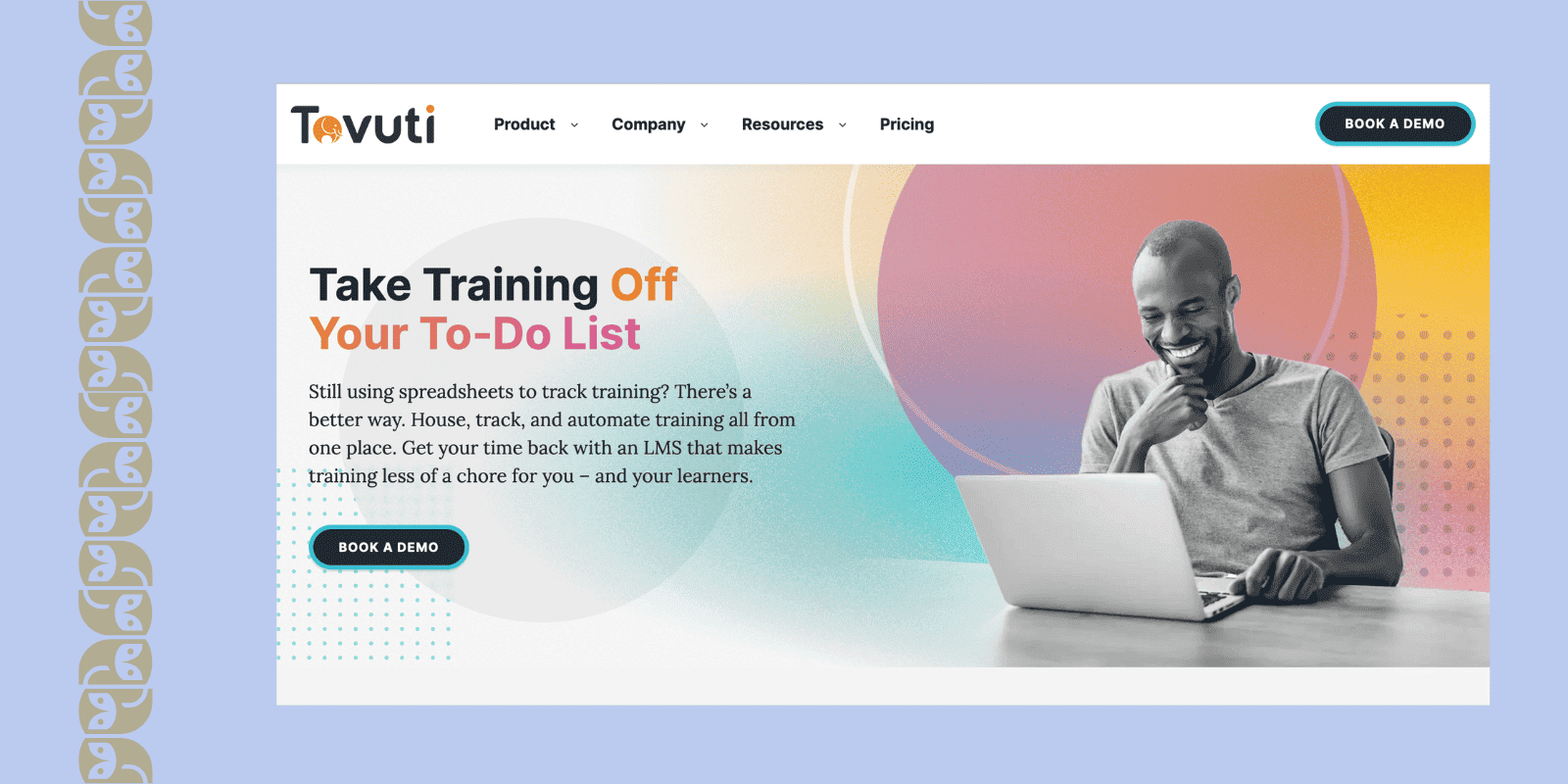
If you're seeking a Moodle alternatives with a strong emphasis on interactive and engaging training, Tovuti LMS could be a compelling choice. Unlike Moodle, Tovuti LMS excels with its diverse content options, gamification features, and collaborative tools. This makes it ideal for organizations that prioritize dynamic, engaging content and an interactive learning environment.
Pricing: Starts at $11.160/year; Tovuti Lite starts at $199/mo (up to 50 users, unlimited courses)
Pros of Tovuti LMS
- Offers over 40 different content types, providing flexibility in designing training programs.
- Includes features such as badges, checklists, and certifications to boost engagement and motivation.
- Supports a collaborative learning environment with community features and peer interactions.
Cons of Tovuti LMS
- The system’s complexity and non-intuitive design can be challenging for new users.
- E-commerce, API access, and SCORM support are available only with higher-tier pricing plans.
- The high-tier plans can be expensive, potentially increasing overall costs.
Best For: Training organizations that prioritize dynamic, engaging content and an interactive learning environment.
Conclusion
The best alternative to Moodle depends on your specific requirements and preferences.
TalentLMS offers gamified features tailored for corporate training, while Docebo provides advanced AI-driven learning paths and analytics. Canvas LMS stands out for its highly customizable platform, ideal for institutions seeking flexibility, and Google Classroom integrates seamlessly with Google Workspace for educators already utilizing its tools.
However, for those prioritizing collaborative learning experiences, streamlined assignment management, and robust engagement tools, EducateMe emerges as the optimal choice. Take advantage of the 14-day free trial or book a free demo to experience firsthand how EducateMe can scale your collaborative learning and educational success.























